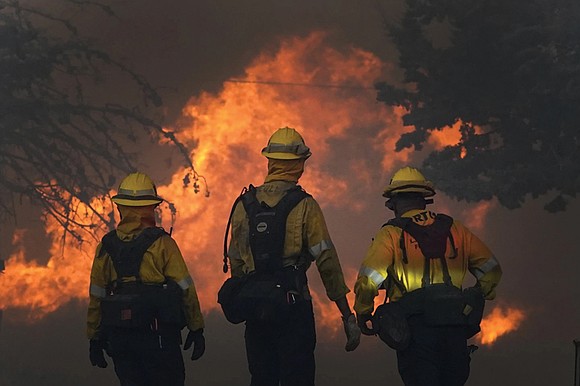Rising temperatures, poor planning fuel wildfire crisis, by Ben Jealous
6/5/2025, 6 p.m.

The smoke has already arrived. This past week, thick plumes from wildfires in Manitoba and Saskatchewan drifted into the U.S., triggering air quality alerts across the Midwest. Cities like Milwaukee, Madison and Chicago are experiencing hazy skies and dangerous air conditions, with the Air Quality Index reaching levels unhealthy for sensitive groups.
Fire has always helped shape our forests, especially in the West. But those forests have evolved around natural frequencies and intensities of fires. What we are seeing now is new. This early-season smoke is a stark reminder that fire season is no longer confined to the West or wild areas, and more intense and longer-lasting fire seasons are the new normal.

Megan Paxman says she lives “in a state of constant anxiety every wildfire season.”
A mother to a son with asthma in Alberta, Canada, she wrote on the Canadian Broadcasting Corp.’s website about her experience on Mother’s Day 2023.
“My 4-year-old son has been sleepy and unwilling to eat all morning. I notice that the skin between his ribs and at the base of his throat is pulling in between every inhale.”
When Paxman called the local general health information service, a nurse told her, “Get him to the hospital now.”
“The second I get a whiff of that telltale smell, I go into super-watchful mode,” Paxman says. “I’m obsessively checking the local air quality levels and his breathing while watching for haze on the horizon or an orange tint to the light.”
That haze and orange tint are becoming more familiar for Americans from California to the Great Lakes to the East Coast.
As of May 30, the U.S. had recorded more than 27,700 wildfires this year — 33% more than the 10-year average for this time of year. The devastating fires in Southern California this past January reminded us that the areas threatened directly by wildfires are increasing, with major cities no longer safe. The conditions that gave rise to those fires — including the Palisades and Eaton fires, which destroyed more than 18,000 structures and claimed at least 30 lives — were exacerbated by climate change.
That’s how it is around the world as well, where the global area considered “fire-prone” is projected to grow by 29% by the end of the century.
Aside from fires’ destructive impacts, the health effects of wildfire smoke are profound. Fine particulate matter (PM2.5) from these fires can penetrate deep into the lungs, leading to respiratory issues, heart problems and other serious health concerns. Children, older adults and individuals with preexisting conditions are particularly vulnerable.
Rising temperatures, prolonged droughts, high winds and certain extreme weather events create the perfect conditions for wildfires to ignite and spread rapidly. But despite the growing risks, recent decisions by the Trump administration have undermined our ability to respond effectively.
Staff and budget cuts to key agencies responsible for forest management and wildfire prevention threaten to leave us even more vulnerable and less prepared. Additionally, harmful legislation like the Fix Our Forests Act threatens to weaken environmental protections and prioritize logging over sustainable forest management that could actually help address forest fires.
We need a comprehensive approach to address this crisis. This includes investing in forest restoration, supporting fire-resistant and resilient infrastructure, and policies that drastically reduce greenhouse gas emissions. Public education campaigns also can play a crucial role in promoting fire safety and preparedness.
There is no safe level of exposure to wildfire smoke. It is 10 times more toxic to our health than standard air pollution from the burning of fossil fuels. According to multinational studies reported in the journal “Nature”, wildfire-specific PM2.5 increases the risk of hospitalization for a range of respiratory illnesses, from asthma to the flu. That’s especially true for people under age 19 or older than 60. Compared to PM2.5 from other sources, wildfire-specific PM2.5 leads to a greater risk of hospitalization for all respiratory diseases.
Communities across the country must come together to demand action. We must hold our leaders accountable and push for policies that prioritize public health and environmental sustainability.
The challenges are immense, but with collective effort and determination, we can build a more resilient future.
The writer is the executive director of the Sierra Club and a professor of practice at the University of Pennsylvania.






